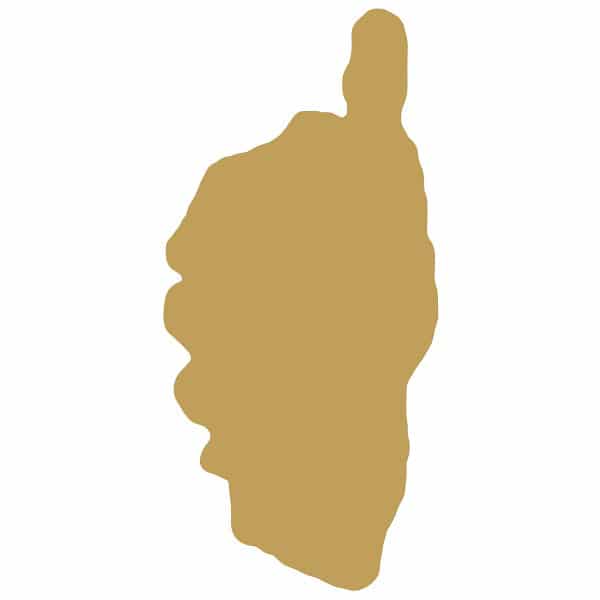
Corsica is a fascinating travel destination famous for its stunning coastline, dramatic mountains, and interesting history. Read on for essential facts and information about the ‘Island of Beauty’ to familiarize yourself with its unique heritage.
This page contains affiliate links meaning I get a commission if you decide to make a purchase through my links, at no extra cost to you. Click here to learn more.
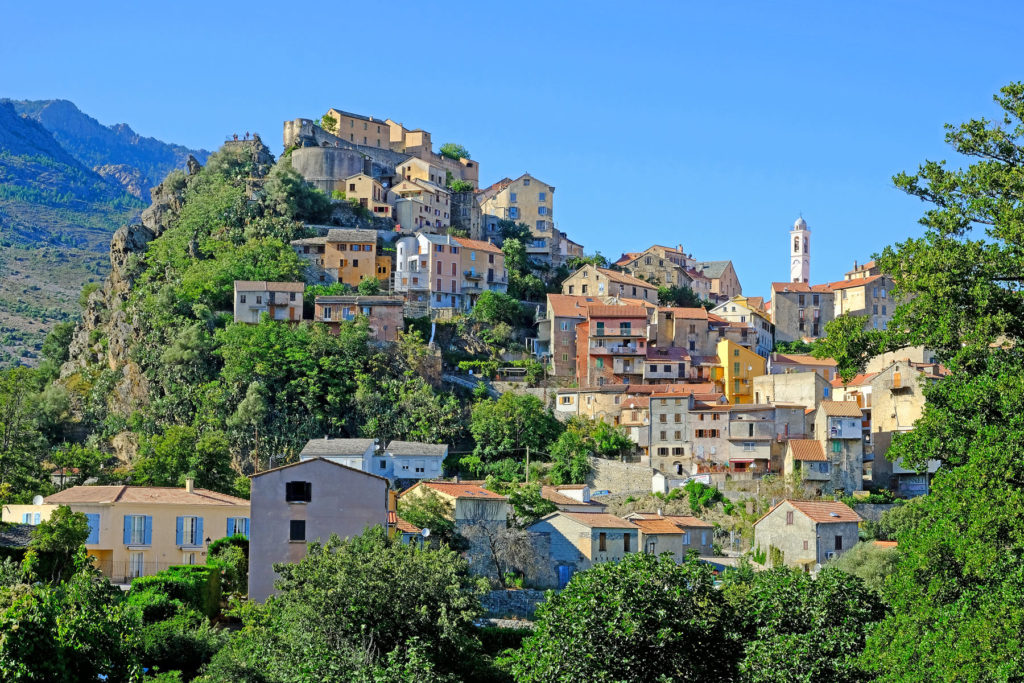
- Corsica is a French island located in the Mediterranean Sea.
- It lies 170 km from the southern shores of France, 83 km from northwestern Italy, and 11 km from Sardinia.
- Being 183 km long and 85 km wide in its broadest part, it is the fourth largest island in the Mediterranean.
- With a surface area of 8722 km² and 339178 inhabitants, Corsica is the least populated territory in Metropolitan France.
- Due to its breathtaking scenery rich in contrasting landscapes, it is known as the ‘Island of Beauty’.
- In coastal areas, Corsica benefits from a mild Mediterranean climate with hot summers and rainy winters. The mountainous interior enjoys alpine conditions at higher altitudes.
- Mountains and hills occupy most of the territory. 120 peaks exceed 2000 m with Monte Cinto (2706 m) being the highest.
- Corsica has 1046 km of coastline dotted with sublime sandy beaches, picturesque bays, and secluded rocky coves.
- Much of the island is blanketed by the maquis, a fragrant scrubland composed of aromatic plants such as lavender, juniper, cistus, or myrtle thriving in the shade of oak, chestnut, and olive trees. Laricio pines dominate higher altitudes of the interior but also frame some of Corsica’s glorious beaches.
- The Regional Natural Park of Corsica covers 40% of the island’s territory, spreading across 350510 ha. It protects mountain massifs, forests, and lakes in central areas as well as other natural landmarks- Calanches de Piana, Gorges of Spelunca and Restonica, or Scandola.
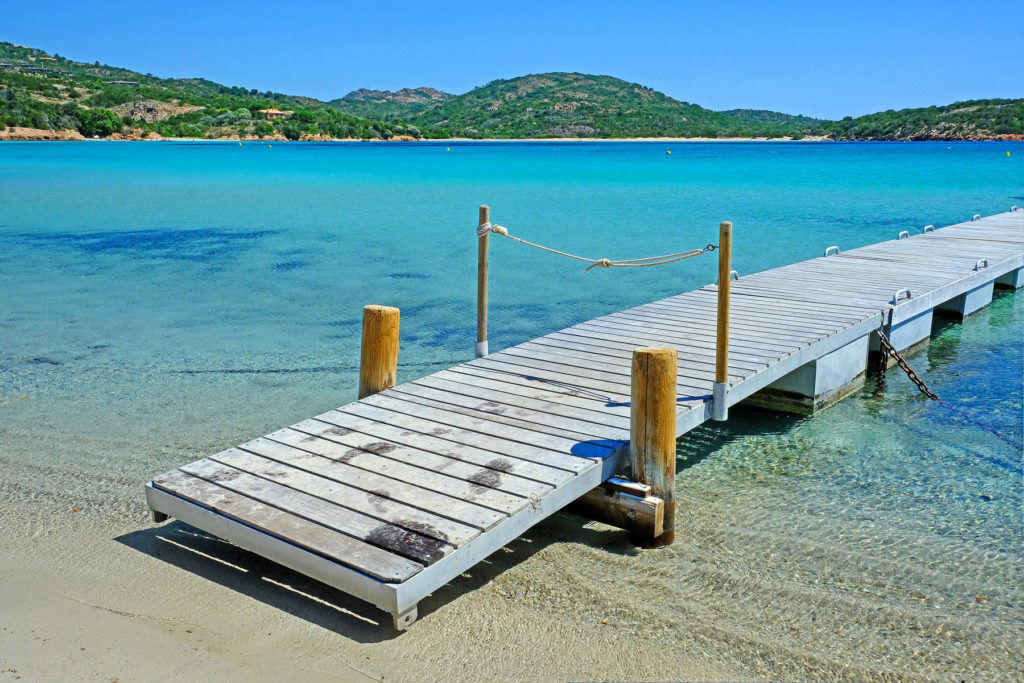
- GR 20, one of the most beautiful long-distance trails in the world, traverses the island from Calenzana in the north to Conca in the southeast through some of the most mythical landscapes of the interior.
- There are seven ports that provide maritime links between the island and the European continent and four airports offering regular connections with various locations.
- Until 1 January 2018, Corsica was divided into two departments- Haute-Corse in the north and Corse-du-Sud in the south. After their merger, a new Collectivity of Corsica (Cullettività di Corsica) was established.
- Ajaccio, the island’s largest city, is the capital of the territorial Collectivity of Corsica.
- The Corsican Assembly, with a seat in Ajaccio, serves as the region’s unicameral legislative body accountable to the National Parliament in Paris.
- A Moor’s Head with a bandana on the forehead is Corsica’s emblem featured on flags throughout the island.
- Corsica’s economic activity is based on tourism, agriculture (citrus, chestnut, olive oil), viticulture, and pastoral breeding.
- One-third of the local population is employed in the public sector.
- The ‘Island of Beauty’ is renowned for the development of renewable energy, leading the implementation of innovative new technologies.
- The most popular sports in Corsica are football (AC Ajaccio and SC Bastia) and volleyball (GFCO Ajaccio Volley-Ball).
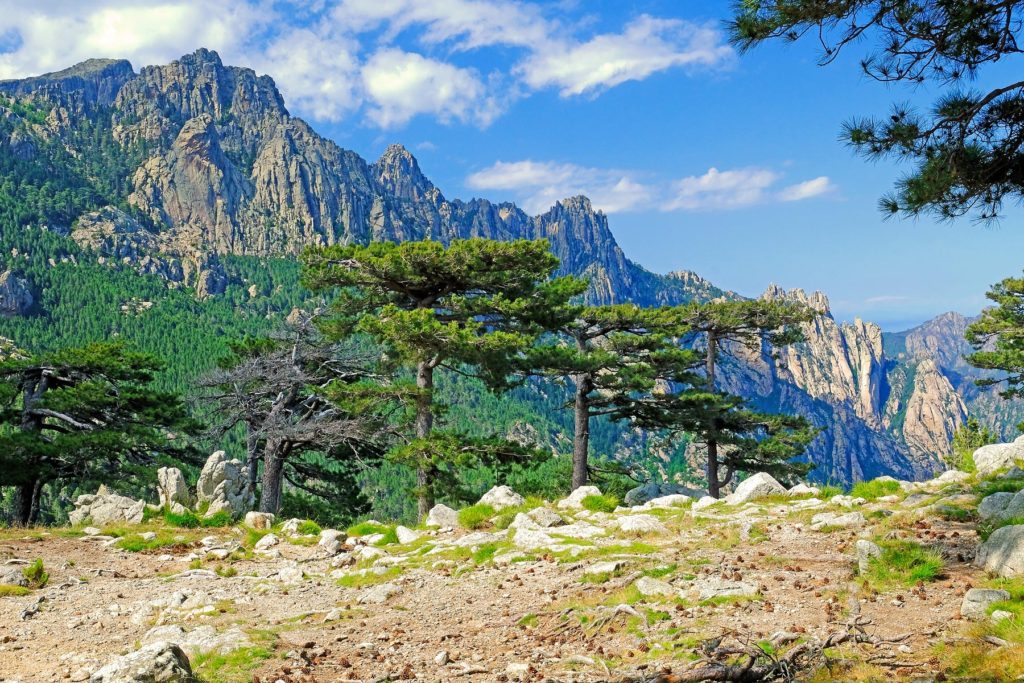
- Corsicans are a freedom-loving nation whose patriotic mentality was forged by an eventful and turbulent history marked by centuries of foreign rule, conquest, and battles against the invading powers.
- The Corsican Constitution, introduced in 1755 by Pasquale Paoli, the leader of the resistance movement, is considered the first democratic constitution in modern times.
- Dio vi Salvi Regina, a religious song written by Francis de Geronimo around 1675, was adopted as the national anthem of Corsica at the proclamation of independence from the Republic of Genoa in 1735.
- The rich Corsican language, U Corsu, originating from Low Latin and the medieval Tuscan, taught in primary school, is still used by many citizens of different age groups. French, the official language, is spoken by all Corsicans.
- The island’s dominant religion is Catholicism, with Sainte Devote being its patron saint.
- Beliefs and customs predating Christianity are still alive in contemporary culture. The practice of Ochju (chasing away the evil eye) and Mezzérisme are most known.
- Polyphonic singing plays a fundamental role in the island’s cultural heritage. Sang at every occasion, used even as sacred church music, polyphonics originated with shepherds who led their herds to the green grasses of the mountains in summer months.
- Traditional Corsican cuisine is based on the earthy ingredients of the mountains. Wild boar, veal, lamb, and cured meats are signature local specialties. Other staples include brocciu, cheese made of sheep or goat milk, and chestnut products such as pulenda or trout abounding in the island’s rivers. Saltwater fish and seafood are more popular in Corsica’s coastal regions. Local gastronomy also draws on Italian influences– cannelloni, gnocchi, or ravioli are accompanied by a variety of sauces, while sun-drenched vegetables are liberally drizzled with delicious olive oil.
- Corsica is famous as the birthplace of Napoléon Bonaparte. Maison Bonaparte in Ajaccio is open to the public.
- The island’s prehistoric sites belong to some of the greatest archaeological treasures of the Mediterranean. At Filitosa, carved statue-menhirs date back 8000 years.
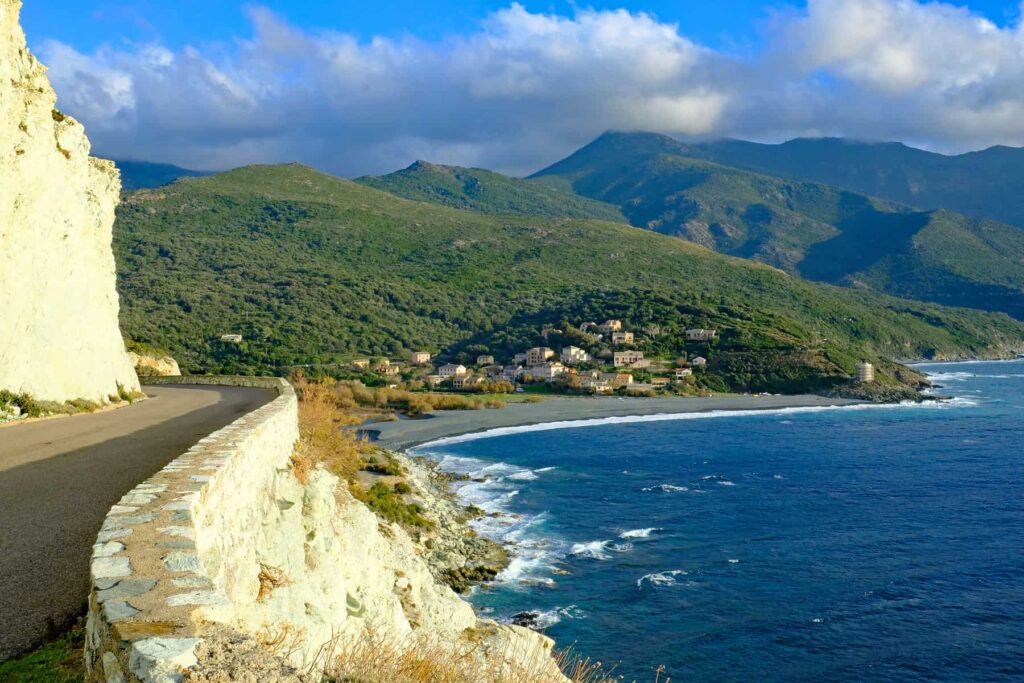
TRAVELLER’S COMPANION FOR A TRIP TO CORSICA – GRAB YOUR EBOOK!
33 Natural Pools and Waterfalls in Corsica
Descriptions – Directions – Coordinates
VISIT CORSICA’S SUBLIME NATURAL POOLS – GRAB YOUR GUIDE
Discover Corsica’s glorious natural pools and waterfalls with a concise guide featuring 33 stunning river spots across the island. Perfect for wild swimming, family outings, and nature exploration, it provides clear access details, GPS parking coordinates, and nearby attractions. From peaceful basins to dramatic cascades, it helps you safely navigate the island’s rugged landscapes and uncover hidden gems beyond well-trodden tourist paths. Ideal for planning unforgettable outdoor adventures, this practical 51-page eBook may become your companion on an exciting journey to Corsica’s pristine rivers.
READ MORE
- Where to stay in Corsica – best places and areas for your visit
- Corsica’s best beach hotels and top coastal locations
- Best places to stay in Corsica for couples
- Best time to visit Corsica
- Corsica – where to go and what to do
- Visiting Corsica – how to get there
- Don’t expect this in Corsica – 20 surprising facts for visitors
- Is Corsica an expensive travel destination – money guide for visitors
- Getting around Corsica – do you need a car?
- Top 3 destinations for a car-free holiday in Corsica
- Corsica or Sardinia? Find your dream Mediterranean escape
- Is Corsica a safe place to visit – travel advice and tips
- What to avoid in Corsica – 11 common mistakes
- Driving in Corsica – tips and scenic routes ideas
- Visiting Corsica in winter – the ultimate travel guide


2 comments
Hello Karola, I love your website!. Can you give me some advice? My wife and I would like to visit both Corsica and Sardinia this year. If the weather is good, we are thinking of beginning of June for two weeks, one week in Corsica and one week in Sardinia. Can you please advise us if that is a good time or too early for great weather. We would like some beach days and also exploring the country. We will rent a car. Should we start in Corsica and end in Sardinia?We are coming from the USA and could fly to Corsica or to Nice and take a ferry. Do you have any suggestions? I think we should not stay in the same place for the entire week? Do you agree? Do you have any great towns to suggest and upscale hotels? Thank you for your help.
Hello Bill,
Thank you for your message!
June is a great time to visit both Corsica and Sardinia. You will almost certainly have beautiful sunny weather but temperatures will not be too high. Some cloudy days and brief rain are possible, but generally, June is considered a high season on the islands.
Interestingly, I just published an article about Corsica and Sardinia, you might find it useful. Here is the link https://coolcorsica.com/corsica-or-sardinia-find-your-dream-mediterranean-escape/.
In the ‘luxury travel’ paragraph, I listed the best upscale hotels on both islands.
As to the best locations in Corsica, I would pick two places. If you arrive by ferry from Nice, Ile Rousse and Calvi are both fabulous. There are numerous lovely beaches in the region, the towns are charming and easily walkable, and from Calvi, you could do a boat trip to Scandola and Calanches de Piana (in my opinion a must-do attraction when visiting Corsica). Best upscale hotels are listed in the articles about Calvi and Ile Rousse : https://coolcorsica.com/best-of-calvi-14-unforgettable-things-to-do-and-see/, https://coolcorsica.com/welcome-to-lile-rousse-one-of-corsicas-summer-hot-spots/.
For your second destination I would choose the Porto-Vecchio – Bonifacio region in the south. Here are links to the articles on both towns, including the best attractions and hotels : https://coolcorsica.com/porto-vecchio-travel-guide-everything-you-need-to-know/, https://coolcorsica.com/bonifacio-travel-guide-discover-corsicas-top-destination/.
If you have more questions you may email me directly at [email protected].
All the best!
Karola